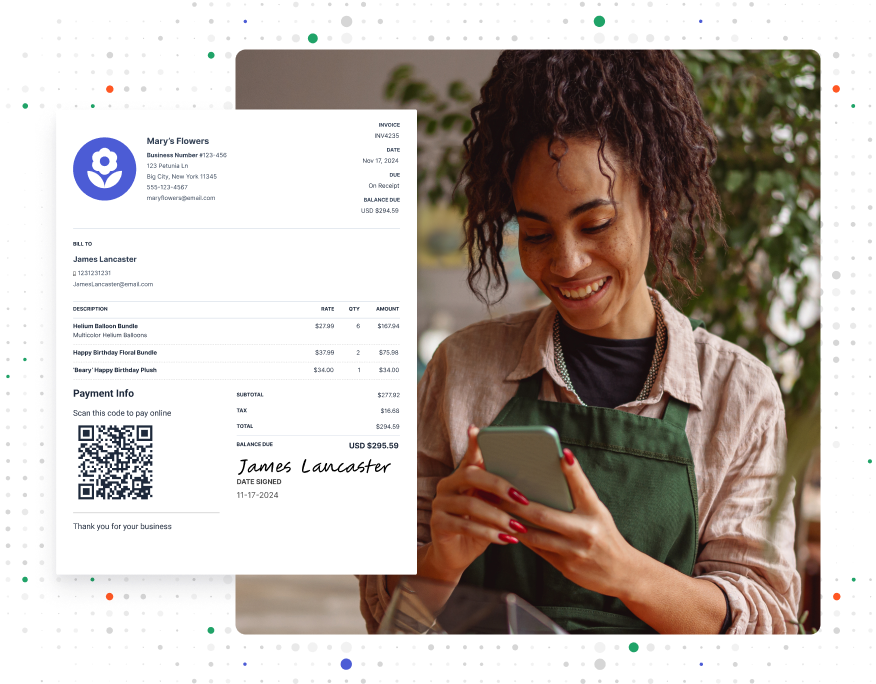Profit and Loss Statement: How To Create and Read a P&L

How much money is your company making? Every business, no matter the size, has to answer this question throughout the year. When you’re profitable, you know you’re succeeding.
A profit and loss statement (P&L) is a simple financial document that helps you better understand your financial position. Here’s how a P&L works and your options for creating one.
What Is a Profit and Loss Statement?
P&L statements, also called income statements or revenue statements, list your revenue and expenses for a certain period. Revenue includes the money you earned during the accounting period. Expenses include everything you spent, from the cost of raw materials to your employee’s gross pay.
After subtracting expenses from revenue, the statement shows whether you’re operating at a profit and making money or operating at a loss and losing it. This helps you plan for the future and show stakeholders how you’re doing.
FROM ONE OF OUR PARTNERS — How To Understand and Increase Your Cash Flow Like Never Before
Types of Profit and Loss Statements

Every P&L statement shows revenue and expenses. But there are different ways to display this information. Think about the complexity of your business and your goals for this report to decide which might be best for you.
Here are some potential approaches to try.
Single-Step Method
If you want to make writing your P&L statement simple, use the single-step method.
Here’s how:
- List all of the revenue items at the top of your document.
- Subtract expenses.
- Write down the income or loss you calculated.
You’re only doing one calculation here, which is why this approach is called the single-step method. It makes sense to use this approach if your company’s finances are simple. But while this method is easy, it lacks detail. Take a different approach if you want to examine your revenue and expenses more deeply.
RELATED ARTICLE — Accounts Receivable Versus Payable: Differences and Examples
Multi-Step Method
The multi-step method breaks down revenue and sales into more detail. For example, instead of just looking at total expenses, you divide this category into operating and non-operating costs.
As the name suggests, you need to take multiple steps or do multiple calculations with this approach. Here are some of the categories to know:
- Gross Profit. This is your net sales (total sales) minus the cost of the goods you sold.
- Operating Income. This is your profit after deducting operating expenses. Calculate it by taking your gross profit and deducting operating costs.
- Net Income. This is the money left after subtracting expenses and deductions.
This approach is best if you want to spot specific areas for improvement or if your company’s finances are more complicated.
Cash Method
The cash method is another simple approach. Here’s how to make a P&L statement using this method:
- Add up actual cash inflows or money you collected during the accounting period.
- Add up the outflows or money you spent.
- Subtract outflows from inflows.
One benefit of this approach is that it recognizes revenue when you earn it and records expenses only when you pay for them. But it may not be as helpful in understanding overall performance. It doesn’t account for any revenue you earned but you have yet to collect or any spending you’ve done but have yet to pay for.
RELATED ARTICLE — Accrual Basis Accounting: Definition and How It Works
How To Create a Profit and Loss Statement
You don’t need an accounting degree to create a P&L. Just follow these steps:
- Decide What Period To Cover. A P&L often looks at your monthly, quarterly, or annual profit. Choose which timeline that works for you.
- Add Up Your Gross Revenue. This is purely money your company generates. At this point, you don’t want to subtract costs or take into account assets like accounts receivable. You’re only looking at earnings.
- Calculate Your Costs. This includes the cost of goods sold, like labor and raw materials. It also includes operating expenses or other costs of running a business, like electricity and rent for your building. Finally, add in non-operating expenses, like taxes and interest.
- Subtract Costs From Revenue. This gives you net income, which you display on the bottom line. If it’s positive, you made a profit. If it’s negative, you operated at a loss.
You can use a profit and loss statement template to remind you what to include.
FROM ONE OF OUR PARTNERS — How To Analyze a Profit and Loss Statement
Profit and Loss Statement Examples
Here’s a simple P&L example for a window-washing company to show you what it should look like.
P&L for January 2024
| Sales and Revenues | |
| Revenue from window cleanings | $20,000 |
| Costs | |
| Cost of services provided (labor and materials) | $13,000 |
| Operating expenses (marketing, insurance, gas, and van maintenance) | $2,000 |
| Non-operating expenses (taxes) | $850 |
| Total Expenses | $15,850 |
| Profit/Loss | $4,150 |
How To Read a Profit and Loss Statement
Creating accounting documents is important. But being able to interpret them is even more important. You need to know how to read a P&L to properly analyze the data and use it to make decisions.
Here are a few techniques:
- Horizontal Analysis. Also called a series analysis, this method looks at changes over time. For example, you might compare how your materials costs changed from 2022 to 2023. This helps you identify issues like a disproportionate increase in labor or materials costs that could affect your bottom line.
- Vertical Analysis. This looks at expenses as a percentage of revenue. For example, you could see how much your company spends on labor compared to its total revenue. This helps you see if you’ve spent too much.
- Gross Profit Margin. Calculate gross profit margin by dividing gross profit by revenue. It shows how much you make after subtracting operational expenses.
- Net Profit Margin. Calculate this metric by dividing net income by revenue. It shows the percentage of revenue you keep after accounting for all costs.
RELATED ARTICLE — Small Business Tax Returns: Everything Business Owners Need To Know
3 Tips To Handle the Profit and Loss Statement Like a Pro

The better your P&Ls are—and the more in-depth your analysis—the better off you’ll be. You can make much more informed choices if you know the details about how much you’re earning after expenses.
To make the most of your statement:
- Review Your P&L Regularly. Reviewing statements often helps you understand how your company is performing. And if you’re consistently not making a profit, you need to make some changes quickly.
- Be Detailed When Categorizing. The more detail you go into, the more useful the P&L will be. For example, if you break down expenses into categories, you can more easily spot where you’re overspending.
- Identify and Track KPIs. Decide what key performance indicators (KPIs) are important to you and use the P&L to track them. For example, you may want to focus on specific revenue sources or operating expenses to see how well your company is doing at accomplishing its goals.
RELATED ARTICLE — What Is Bookkeeping? Definition, Types, and Importance of Bookkeeping
Organize Your Finances With Invoice Simple
When it comes to accounting, there’s a lot to track. Invoice Simple makes everything easier.
Invoice Simple’s Business Expense Tracker takes the hard work out of drafting a P&L statement. You scan any receipt, and the app captures key info automatically. All your expense data is ready to export when you’re ready to write a P&L.
Start Your First
Invoice Today
Create customized and professional
invoices and connect with clients
